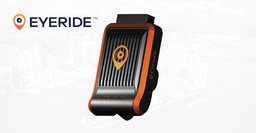
Passenger Tracking: How Automated Counters are Improving Public Transportation
Automated Passenger Counters (APCs) work tirelessly behind the scenes to keep track of every passenger who steps onto a bus or train. These high-tech systems use cutting-edge technologies like cameras, infrared and weight sensors to monitor every passenger who enters and exits a vehicle.
With APCs on the job, transportation agencies have a wealth of data at their fingertips, revealing models and trends that would otherwise go unnoticed. From the number of passengers on a given route - to the performance of the transportation system as a whole - APCs provide the agencies with data to make informed decisions.
APCs are also your transportation system’s personal coaches, helping to identify areas where you can improve. They also aid in optimizing routes, scheduling, and resource allocation, ensuring that every bus and train runs at its best and that your passengers are getting where they need to go on time.
In other words, APCs are a superpower for public transportation - giving agencies the ability to see and understand their transportation systems in ways they never thought possible. An APC enables transit to provide better service, save costs, and improve their passengers’ ride experience.
The global APC system market will probably reach 13.2 billion dollars by 2027, rated at CAGR of 9.1%.
Automated Passenger Counters vs Manual Passenger Counting
When it comes to counting the number of passengers on public transportation, there are two main options: automated and manual passenger counting. Both methods have their own tradeoffs, and choosing the right one depends on a transportation company's specific needs and resources.
One survey by researchers at the University of California, Berkeley, found that APCs can provide more accurate and reliable passenger counting data, with less than 2% error rates, a significant increase compared to manual counting methods.
Accuracy: APC systems use various technologies, such as infrared sensors and cameras, to count passengers with impressive accuracy. In contrast, manual counting methods can be subject to errors due to human error or biases.
Efficiency: APC systems count passengers quickly and continuously without requiring manual intervention. On the other hand, manual counting methods require human workers, which can be time-consuming and labor-intensive.
Data collection: APC systems can collect and store data in real-time for later analysis. Manual counting methods typically require data to be recorded by hand, which can be time consuming and prone to errors.
Scalability: Fleet businesses can quickly scale APC systems to count passengers on multiple vehicles, whereas manual counting methods can become impractical when counting large numbers of passengers.
Cost: APC systems can be expensive to install and maintain, whereas manual counting methods are relatively low-cost. However, the cost of APC systems can be offset by the time and labor savings they provide, and the more accurate data they generate.
How do Automated Passenger Counters Work?
Automated Passenger Counters (APCs) use a combination of technologies to automatically count the number of passengers boarding and exiting public transportation vehicles. These technologies can include:
- RFID: Readers detect when a passenger uses a smart card, a contactless transit card or a mobile phone to pay for the fare and use that as a counting point.
- Infrared sensors: Detect the presence of passengers by measuring changes in infrared radiation. Typically placed at the vehicle's entry and exit points.
- Weight sensors: Measure changes in weight as passengers board and exit and are typically placed on the vehicle's floor.
- Cameras: Capture images of passengers boarding and exiting the vehicle and analyze them through computer vision algorithms to count the number of passengers.
The data collected by the APCs can then be transmitted in real-time to a central system, where it is analyzed and used to improve transportation operations thanks to the accuracy of ridership data.
Introducing EYERIDE’s Automated Passenger Counter
EYERIDE’s Automated Passenger Counter (APC) is a system that uses cameras and image processing technology to count the number of passengers in a public vehicle.
The system is typically installed on buses or trains and can detect and count passengers as they board and exit.
EYERIDE’s APC uses advanced algorithms to analyze the images captured by cameras and can differentiate between adults and children, as well as standing and sitting passengers, to provide a more accurate count. The data gathered by the system can be employed for a variety of objectives, such as determining the number of passengers on a given route, measuring the performance of a transportation system, and identifying areas where service improvements are needed.
Additionally, EYERIDE APC provides more analytics, which is crucial for transportation agencies to have insight into their passengers' usage patterns and ride experiences. These include live occupancy reports, specific stop data, boarding/alighting data, and heat maps of people’s movements.
Advantages of Using EYERIDE Automated Passenger Counter
There are several benefits to using the EYERIDE Automated Passenger Counter (APC) system for public transportation:
- Accurate passenger counts: The EYERIDE APC uses cameras and advanced algorithms to detect and count passengers as they board and exit the vehicle, providing a more accurate count than manual methods.
- Real-time data: EYERIDE APC system provides real-time data on passenger counts, allowing transportation agencies to make quick and informed decisions about scheduling, route planning, and resource allocation.
- Improved efficiency: By using real-time data on passenger counts, transportation agencies can improve their operations' efficiency and better utilize resources.
- Increased insight: EYERIDE APC system provides detailed data and analytics on passenger behavior, such as boarding patterns, alighting patterns, specific stop data, live occupancy reports, and heat maps of people’s movements. It helps agencies make more informed decisions about service improvements and better understand the needs of their riders.
- Cost-effective: EYERIDE APC is a cost-effective solution for transportation companies to get an accurate passenger count and improve operations as they are more precise and efficient as compared to manual counting methods.
- Easy Installation: EYERIDE APC is an easy-to-install system. It typically does not require additional infrastructure, has minimal to no additional maintenance, and companies can install it in both new and existing vehicles.
In short, EYERIDE Automated Passenger Counter is a game-changing technology that empowers public transportation agencies with the information they need to deliver better service and improve their bottom line. It's like having a crystal ball that helps you see the future of your transportation system to make the best decisions for your passengers and your organization.








